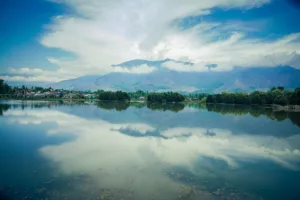Northeastern India’s Manipur is a region with a rich history, culture, and traditions. The state has an intriguing background, with prehistoric roots and a history of strong kingdoms. Significant political, social, and cultural changes over the ages have shaped Manipur’s distinct identity. The detailed history of Manipur will be examined in this article. We will examine its ancient origins, the rule of strong dynasties, colonial impact, and the path it took to becoming an essential component of independent India.
Early Civilization and Ancient Origins: Manipur’s history can be traced back to prehistoric times Archaeological findings indicate that human settlements in the area date as far back as the Stone Age. The Meiteis, Nagas, Kukis, and Pangals were a few of the early ethnic groups that live in Manipur. The various culture and customs that exist in the state today have their roots in these tribes. Manipur evolved into an area with well-run kingdoms and active trading networks over time.
The Rise of great Kingdoms: The rise of great kingdoms is one of Manipur’s most important historical periods. Several powerful dynasties rose to prominence in the state, with the Meitei Kingdom emerging as the most notable. A long series of famous kings and queens served as part of the Meitei dynasty, which ruled over Manipur for centuries. The area went through a period of wealth and cultural development during their dominion, and art, literature, and architecture flourished.

King Pakhangba and the Kingdom of Ningthouja: The Kingdom of Ningthouja was one of Manipur’s first and most illustrious dynasties. The kingdom underwent substantial development and power consolidation under King Pakhangba, also known as Nongda Lairen Pakhangba. King Pakhangba is lauded for bringing together disparate clans and laying a solid foundation for Manipur’s development into a potent monarchy.
Colonial Influence and the Independence Movement: With the arrival of British colonial power in the 19th century, Manipur’s history underwent considerable changes. When the British East India Company began to operate in the area, it sparked political unrest and opposition from the regional aristocracy. The most notable revolt against British rule in the state was the Anglo-Manipur War of 1891. Despite difficulties, Manipur maintained its identity and kept its culture and customs alive.

Anglo-Manipur War and Its Consequences: The Anglo-Manipur War of 1891 was a crucial event in Manipur’s history. The Manipuri armies were defeated in the battle, which allowed the British Empire to seize the country. The Manipur State Darbar was disbanded, and British officials took over management of the state. The political environment changed as a result of the conflict, with Manipur becoming a princely state under British rule.
Integration into Independent India: In 1947, when India became independent, Manipur was admitted as a full member of the Indian Union. The state saw a number of political transformations and witnessed the establishment of its own elected administration. Manipur, too, also had to deal with internal strife and calls for more ethnic autonomy. Both development and difficulties have been present throughout the state’s path to become a part of independent India.

The Cultural Importance of Manipur: Manipur’s rich cultural legacy is woven together from a variety of different art forms, dances, musical genres, and festivals. One of the most well-known dance styles in India is manipuri, which is distinguished by its beautiful movements and mythological motifs. The Ras Lila dance, which tells the tale of Radha and Krishna’s unending love, is a mesmerising example of Manipuri cultural expression. The state’s cultural celebrations, including Yaoshang and Lai Haraoba, offer a comprehensive look at Manipur’s rich cultural legacy.
The Importance of Manipur in Northeast India: Manipur is extremely significant in northeast India. It is connected to Myanmar by the international border and shares boundaries with other states including Nagaland, Mizoram, and Assam. The state is an important participant in trade and business in the northeast because of its advantageous position. As discussed earlier, Manipur has also contributed to culture and played a significant role in history, making it a vital component of India’s rich past.

Maintaining and Promoting Manipur’s Heritage: As we explore Manipur’s complex past, it becomes increasingly crucial to preserve and advance the state’s cultural legacy. Future generations must benefit from the preservation of ancient customs and the state’s rich cultural legacy. Through initiatives like historical preservation, cultural festivities, and the advancement of indigenous arts, Manipur’s past can be maintained.
Conclusion:
Manipur’s history includes a patchwork of mighty kingdoms, ancient civilizations, colonial conflicts, and the path to becoming an essential component of independent India. The state is special and essential to India’s northeastern region because of its rich cultural legacy, varied traditions, and strategic importance. In order to ensure that Manipur’s legacy endures for future generations, advancement must coexist peacefully with preservation of the state’s identity and customs as it faces the difficulties of modernization and development.
——————————————————————————-
Note:- All pictures are decorative , indicative and symbolic only….

